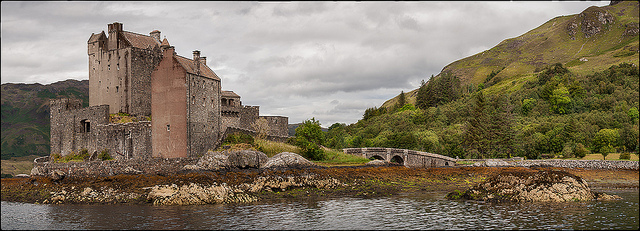Weather in Scotland
 Scotland covers the north of the British Isles, pretty much on the same latitude as Labrador in Canada, which has freezing winters and icebergs. Scotland, however, has the benefit of being warmed by the Gulf Stream in the Atlantic Ocean, and although much colder than England to the south of the United Kingdom, it has a climate classified as temperate, and not too extreme.
Scotland covers the north of the British Isles, pretty much on the same latitude as Labrador in Canada, which has freezing winters and icebergs. Scotland, however, has the benefit of being warmed by the Gulf Stream in the Atlantic Ocean, and although much colder than England to the south of the United Kingdom, it has a climate classified as temperate, and not too extreme.
That technical detail aside, Scotland has, in recent years, experienced some extreme winters (November, December, January and February) with temperatures plummeting to -20-30°C in some areas. Spring and summer in Scotland (June, July, August and September), however, are pure pleasure, with cool to warm balmy conditions (summer temperatures average 20-25°C).
Like everywhere in the British Isles, Scotland tends to be wet, but here in the highlands the rainfall is governed by the topography of the mountains. The western Highlands of Scotland are exceptionally wet and cloudy (around 260 wet days a year) while the east (which includes Edinburgh) – in the “rain shadow” – escapes most of the precipitation. When it comes to winter snow, this more likely to occur as one ascends from the lowlands to the Highlands.
On the subject of all-important sunshine, estimates are that the sun shines on Scotland about 35% of the year. The country is hampered by its northern latitude, which dictates short winter days and overcast summer ones.
You can’t expect to come home with a suntan from Scotland, but this delightful country will enchant you in so many ways with its fantastic scenery, fascinating history, wonderful wildlife, fabulous food and sensational sightseeing, and you can always warm up with a dram of highland whisky!
What’s the best time to visit Scotland?
As the tour brochures say, Scotland is a destination for all seasons!With four very distinct seasons, the best time to visit Scotland is dependent on what you intend to get out of your holiday. Spring (May and June) – before the busy, peak tourist season is perfect for exploring the great outdoors or touring the many attractions.
When summer arrives the streets of the cities come alive with events and visitors. In the height of summer – August – the world-renowned Edinburgh festival and Military Tattoo draws visitors from around the world.
Autumn (September and October) is when the Scottish countryside is at its most beautiful, leaves turning golden and a host of local events taking place before the dark days of winter set in. Those looking for traditional warm and cosy Christmas and New Year celebrations will revel in Scotland in the winter – and the festive season shopping in Edinburgh is to die for!
What to pack for a holiday in Scotland
Packing for Scotland is, of course, dependent on the season of your visit, although all year round a couple of warm sweaters will not come amiss, an umbrella will undoubtedly be useful and stout, comfortable waterproof shoes essential. In summer (July, August, September) jeans and T-shirts will be fine during the day, with a light jacket for after dark. Inbetween seasons (March, April, May, October and November) a waterproof parka to wear over a couple of light layers will suffice, but in mid-winter (December, January and February) take along a thick overcoat, boots, hat, scarf and gloves.
Related Content:
- Login to post comments

